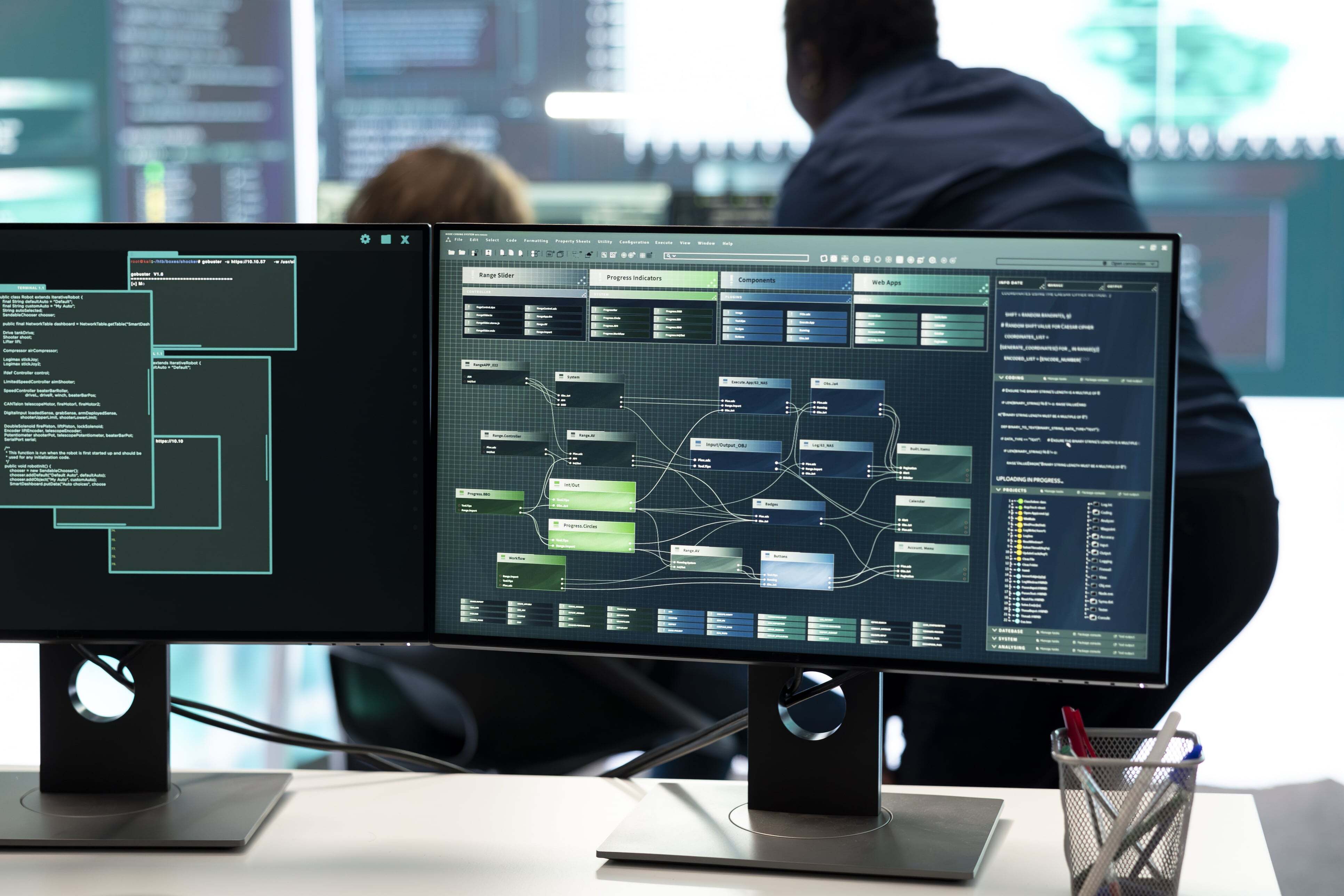Choosing the right digital protection standards now drives revenue streams more than ever. With security service spending projected to hit $90 billion next year, companies face pressure to align their safeguards with measurable financial returns. Nearly 9 in 10 executives now treat these decisions as core business choices – not just technical checkboxes.
Your approach to implementing security guidelines determines which markets you can enter and which clients you’ll secure. Some standards act as golden tickets: ISO 27001 unlocks regulated industries as well as European partnerships, while FedRAMP compliance opens U.S. government contracts. But which sequence delivers the fastest payback?
This isn’t about compliance alone. Strategic security investments can expand your market reach while cutting incident-related costs. When 42% of risk management budgets flow to protective measures, demonstrating clear value becomes essential for maintaining leadership support and funding.
Key Takeaways
- Security standard choices influence revenue growth and market access
- 94% of business leaders prioritize measurable returns from protection spending
- Implementation order can affect the speed of financial returns
- Properly selected standards reduce compliance costs by 30-50%
- Market-specific requirements dictate optimal guideline combinations
Identifying Key Cybersecurity Frameworks for TAM and ROI
Adopting structured security protocols isn’t just about defense—it’s a strategic move to capture new business opportunities. Your total addressable market grows when you meet the protection requirements of high-value clients and regulated industries. Over 75% of enterprises now require partners to hold specific certifications, turning compliance into a competitive advantage.
Understanding TAM Through Protection Standards
Security guidelines directly determine which markets you can enter. FedRAMP compliance, for instance, grants access to $7 trillion in U.S. federal contracts. ISO 27001 certification serves as a universal trust signal, required by many regulated industries like health care, and shortening sales cycles by 20-35% in Europe and Asia. These standards act as gateways to revenue streams that remain closed to unprepared competitors.
Core Benefits of Leading Models
The updated NIST guidelines help organizations streamline risk management across departments. Companies using SOC 2 report 28% lower insurance premiums due to demonstrable data protection practices. Meanwhile, FedRAMP’s rigorous controls reduce breach-related costs by up to 40%, creating both immediate and long-term value.
Each standard addresses unique market needs. Tech startups often prioritize SOC 2 for cloud service credibility, while healthcare providers focus on HIPAA alignment. Your choices directly impact operational efficiency and customer acquisition potential.
Mapping Frameworks to Industry Verticals
Your industry’s regulatory landscape determines which security measures deliver real value. Financial institutions face different threats than hospitals, while tech firms balance unique data handling requirements. Aligning with sector-specific standards builds client trust and avoids costly penalties.
->Get assistance mapping your target verticals to cybersecurity frameworks
Financial, Healthcare & Tech Sector Priorities
Banks and lenders focus on PCI-DSS for payment security and Sarbanes-Oxley Act of 2002 (SOX) for financial reporting integrity. These requirements help reduce fraud-related losses by 18-22% annually. Healthcare organizations combine HIPAA with NIST guidelines to protect patient records – a dual approach that cuts breach costs by 37%.
Tech companies prioritize SOC 2 Type II certifications to prove cloud service reliability. Pairing this with ISO 27001 helps close enterprise deals 40% faster. Cloud security spending now accounts for 38% of tech budgets, reflecting these demands.
Sector-Driven Selection Strategies
Manufacturers often layer industry-specific standards like IEC 62443 over core models. This hybrid approach reduces production downtime risks by 29%. Government contractors use FedRAMP as their entry ticket, with compliant firms winning 63% more bids.
Penalty variations shape investment decisions. Healthcare faces $1.5M average fines per HIPAA violation, while financial missteps trigger 4% revenue penalties. Your sector’s risk profile directly determines which standards yield the fastest returns.
Prioritizing Frameworks Based on Business Objectives
Effective resource allocation starts with understanding what matters most to your organization. Align security efforts with revenue drivers, compliance deadlines, and client expectations. A 2023 Gartner study found companies that match investments to strategic goals achieve 2.3x faster value realization.
Evaluating Business Risk and Investment Impact
Use the Gordon-Loeb model to calculate maximum sensible spending. If potential breach losses total $2M, limit security expenses to $740,000 (37%). This approach prevents overspending while addressing critical vulnerabilities.
Prioritize standards that mitigate your top three risks first. Financial firms might tackle payment security, while healthcare focuses on patient data. Address high-impact, high-probability threats before expanding coverage.
| Evaluation Criteria | Risk Exposure | Implementation Cost | Time-to-Value |
|---|---|---|---|
| Regulatory Alignment | High | $85K | 3-6 months |
| Client Requirements | Medium | $42K | 2-4 months |
| Competitive Gaps | Low | $28K | 1-3 months |
Establishing a Logical Order for Implementation
Start with mandatory requirements – standards needed to operate legally. Next, address client-demanded certifications blocking current deals. Finally, pursue differentiators that create market advantages.
Phase investments using this sequence:
- Immediate compliance needs (90-day deadlines)
- High-ROI client acquisition tools
- Long-term strategic differentiators
This staged approach balances urgent needs with growth opportunities, maximizing cumulative returns while managing costs.
->Evaluate the path to expanding your Total Addressable Market and ROI
Cybersecurity Framework ROI: Evaluating Your Investments
To justify security spending, concrete proof of value outweighs theoretical benefits. Over 68% of enterprises now demand quantifiable evidence that protective measures generate financial returns. This requires translating technical safeguards into boardroom-ready metrics.
Calculating Tangible Savings
The ROSI formula provides baseline financial clarity:
"(Cost of incidents prevented - Annual investment) / Annual investment"
For example: Preventing $1.2M in breaches with $400K spent yields 200% ROSI. But this only captures direct savings. Mature programs track four value streams:
| Metric Type | Calculation Focus | Data Sources |
|---|---|---|
| Direct Savings | Incident reduction | IT logs, insurance reports |
| Operational Gains | Process efficiency | Workflow audits |
| Market Access | New revenue streams | Sales pipeline data |
| Intangibles | Brand trust | Customer surveys |
Building Persuasive Proof Points
Pair financial formulas with operational metrics. Track how security improvements:
- Shorten sales cycles by 12-18 days
- Reduce vendor onboarding time by 33%
- Cut audit preparation costs by $28K annually
Organizations using blended measurement approaches report 47% faster budget approvals. As one CISO noted: "When finance teams see protection investments lowering procurement costs and accelerating deals, funding conversations change completely."
Assessing the Financial Impact with Comprehensive ROI Metrics
Quantifying security investments requires precise financial metrics that speak to decision-makers. Over 82% of finance teams demand dollar-based evidence before approving protection budgets. This demands moving beyond theoretical benefits to hard numbers that show operational and market advantages.
Understanding Annualized Loss Expectancy (ALE) and SLE
Annualized Loss Expectancy converts risk into actionable numbers. Calculate ALE by multiplying Annual Rate of Occurrence (ARO) by Single Loss Expectancy (SLE). If phishing incidents hit your systems three times yearly (ARO=3) at $85,000 per breach (SLE), your ALE becomes $255,000.
| SLE Components | Cost Range | Example |
|---|---|---|
| Direct costs | $25K-$150K | Forensic analysis |
| Recovery | $40K-$300K | System downtime |
| Fines | 2-4% revenue | GDPR penalties |
| Reputation | 12-18% sales drop | Customer churn |
One CISO noted: "SLE calculations forced us to track hidden costs like customer retention efforts post-breach – numbers we previously ignored."
Determining the Payback Period for Cyber Investments
Use this formula to gauge how quickly safeguards generate value:
"Initial Investment ÷ Annual Benefits = Payback Period"
| Implementation | Cost | Annual Benefit | Payback |
|---|---|---|---|
| Email encryption | $48K | $92K | 6 months |
| Access controls | $125K | $210K | 7 months |
| Staff training | $18K | $41K | 5 months |
Shorter periods (under 12 months) typically win faster approvals. But always pair this with ALE comparisons – a 3-month payback matters less if threats carry $50K losses versus $500K risks.
Enhanced Value Through Combined Cybersecurity Strategies
Layering security approaches multiplies financial returns while streamlining operations. Organizations using integrated models report 58% higher cost efficiency than those relying on single standards. This method turns overlapping requirements into strategic advantages rather than bureaucratic burdens.
Benefits of Unified Protection Models
Combining standards creates shared implementation resources. A healthcare provider merging HIPAA with NIST controls reduced audit preparation time by 41% through unified documentation. Overlapping technical requirements cut tool duplication costs by 33% in manufacturing firms.
Integrated approaches strengthen threat detection through multiple lenses. Financial institutions blending PCI-DSS with SOC 2 identified 27% more vulnerabilities in payment systems. As one CISO noted: "Our combined ISO 27001/FedRAMP strategy stopped three zero-day attacks last quarter that single frameworks would've missed."
Synergizing Expenses and Threat Mitigation
Emerging technologies amplify the combined strategies' effectiveness. Generative AI automates 38% of policy documentation across multiple standards, slashing labor costs. This table shows typical savings:
| Integration | Cost Reduction | Risk Improvement |
|---|---|---|
| NIST + ISO 27001 | 29% | 41% fewer incidents |
| SOC 2 + HIPAA | 34% | 53% faster audits |
| FedRAMP + CMMC | 47% | 62% new contracts |
Prioritize combinations addressing your highest risks first. Shared monitoring tools and cross-trained teams drive ongoing savings while maintaining compliance rigor. A tech firm merging cloud security standards with data privacy rules achieved 19-month payback through accelerated enterprise deals.
Best Practices for Implementation and Compliance
Effective protection strategies begin by connecting security efforts to core business outcomes. Nearly 78% of organizations see better results when protective measures directly support revenue growth or risk reduction. Start by forming cross-departmental teams that include finance, operations, and IT leaders.
Aligning Investments with Organizational Vision
Map every security initiative to specific business goals like market expansion or client retention. One healthcare provider boosted stakeholder buy-in by showing how compliance improvements reduced insurance premiums by 19%. Use quarterly reviews to confirm initiatives still support evolving priorities.
Track two metrics simultaneously: operational effectiveness and strategic impact. A manufacturing firm linked access control upgrades to 14% faster production line approvals. As their CISO noted: "When security projects visibly accelerate workflows, budget discussions become growth conversations."
Evolving with Emerging Risks
Real-time monitoring systems now detect 43% of threats before they escalate. Combine automated alerts with monthly ROSI recalculations to maintain relevance. Financial institutions using this approach adapted to new payment fraud patterns 67% faster than peers.
| Review Frequency | Threat Detection Rate | Compliance Accuracy |
|---|---|---|
| Weekly | 89% | 94% |
| Monthly | 76% | 88% |
| Quarterly | 61% | 79% |
Build adaptability into your culture through security awareness programs. Teams that conduct bi-annual training simulations report 53% faster response times to new attack methods. This proactive stance turns compliance from a cost center into a value driver.
Leveraging Tools and Resources for Precise Calculations
Modern measurement platforms transform how companies assess protection spending. Digital solutions now automate complex calculations, turning raw numbers into actionable insights. Over 63% of organizations using these resources report clearer visibility into their security investments’ performance.
Get ROI Guidance to Maximize ROI and TAM Growth
Qualified advisors with experience implementing frameworks in your industry can both simplify and speed your path to expanded market access and quantified ROI that will assist decision makers in making appropriate security investments.
FAQ
How do you measure return on investment for security initiatives?
Track metrics like reduced incident response time, fewer breaches, and avoided regulatory fines. Compare these savings against implementation costs, including tools, training, and audits. .
Why is Total Addressable Market (TAM) important for security planning?
TAM clarifies the scope of threats your business faces, helping prioritize investments. For example, a healthcare provider using HIPAA might focus on patient data protection, while a fintech firm aligns with PCI DSS for payment security.
Which frameworks are best for industries like finance or healthcare?
Financial firms often adopt NIST CSF or ISO 27001 for risk management. Healthcare organizations use HITRUST to meet HIPAA mandates. Tech companies leverage SOC 2 to build client trust through transparent controls.
How do you align security frameworks with business goals?
Start by mapping compliance requirements to operational priorities. For instance, a retail business might prioritize PCI DSS to safeguard transactions, while a SaaS provider focuses on ISO 27001 for cloud data integrity.
What metrics prove the value of security investments?
Metrics include Annualized Loss Expectancy (ALE), incident frequency, and mean time to detect threats. Tools like Qualys or Rapid7 provide dashboards to showcase reduced downtime and recovery costs.
What is Annualized Loss Expectancy (ALE) in risk management?
ALE estimates yearly financial loss from threats by multiplying the cost of a single incident (SLE) by its likelihood. For example, a $100K breach with a 20% annual probability has an ALE of $20K.
Can combining frameworks improve ROI?
Yes. Integrating NIST CSF with CIS Controls, for example, strengthens both risk assessment and technical safeguards. This reduces overlap and maximizes resource efficiency, cutting long-term costs.




